Spring is flying by as we flit through our days. This new vanning lifestyle has us consolidating birthday celebrations, lunches with friends, visits with family, household demands and other activities that have previously filled our days. This morning, as Katie I walked out of the house, I noted with a pang of guilt, that our yard and gardens are suffering too.
Over the years, I have found much joy in gardening, especially in the spring when bed cleanup is particularly satisfying. During the weather ups and downs of spring, perennials begin to make their reentry and annuals are planted with the promise of brilliant summer color. Even an herb or two may have found its way into a pot on the rock wall to enhance summer cooking and flower arrangements. Unfortunately, during the winter of 2022-2023, shrubs and plants in our yard suffered as we experienced an unusually “frigid” cold snap. Temperatures dropped near zero and several of our shrubs and garden plants did not make it through the frigid chill.
This year I have made the decision not to spring plant, a decision that my heart is struggling not to rethink. While mid-spring and early summer would be okay, we will not be home during the depths of the summer heat, which would commit new shrubs and annuals to certain death. Our outdoor faucets are old and complicated so asking a neighbor to navigate them is unreasonable. Therefore, I look will look around the garden and appreciate what is blooming now and hopefully I can offer some aid to the plants that are struggling to survive.
This once healthy Coral Bells (Heuchera) is showing only a few sprigs of life. I need to clean out the dead leaves and clutter to see if the crowns will fill in. This pot’s companion pot is on the other side of the steps. That side, the west side, is slightly more protected, so the companion pot is very healthy and will be in bloom in a few days. I find it interesting that both pots have been under inches of snow for days at a time and did not suffer such damage. Oh, and the variegated Solomon’s Seal behind the Coral Bells is wild and in bloom. The winter seems to have invigorated the Solomon Seal and it will require thinning.
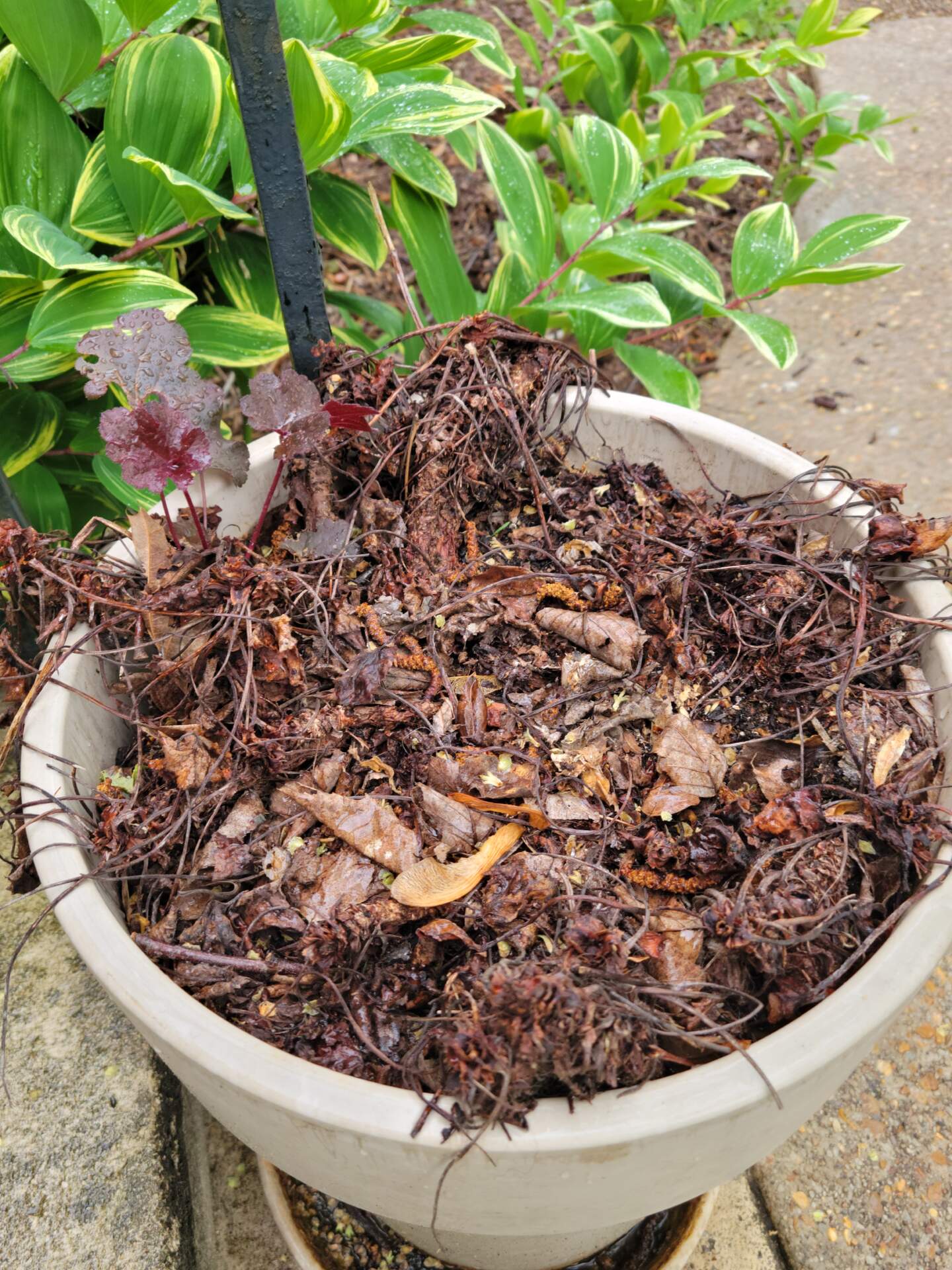
A few other neglected but hardy plants are showing their beautiful faces. This clump of Bearded iris grows under an oak tree, on top of a dirt pile at the back of our driveway. Every year the iris blooms, regardless of how much oak debris has covered rhizomes. This spring I have been whispering sweet nothings to the iris, promising that this is the year I will finally move them to a nice, sunny spot, free of the oak.
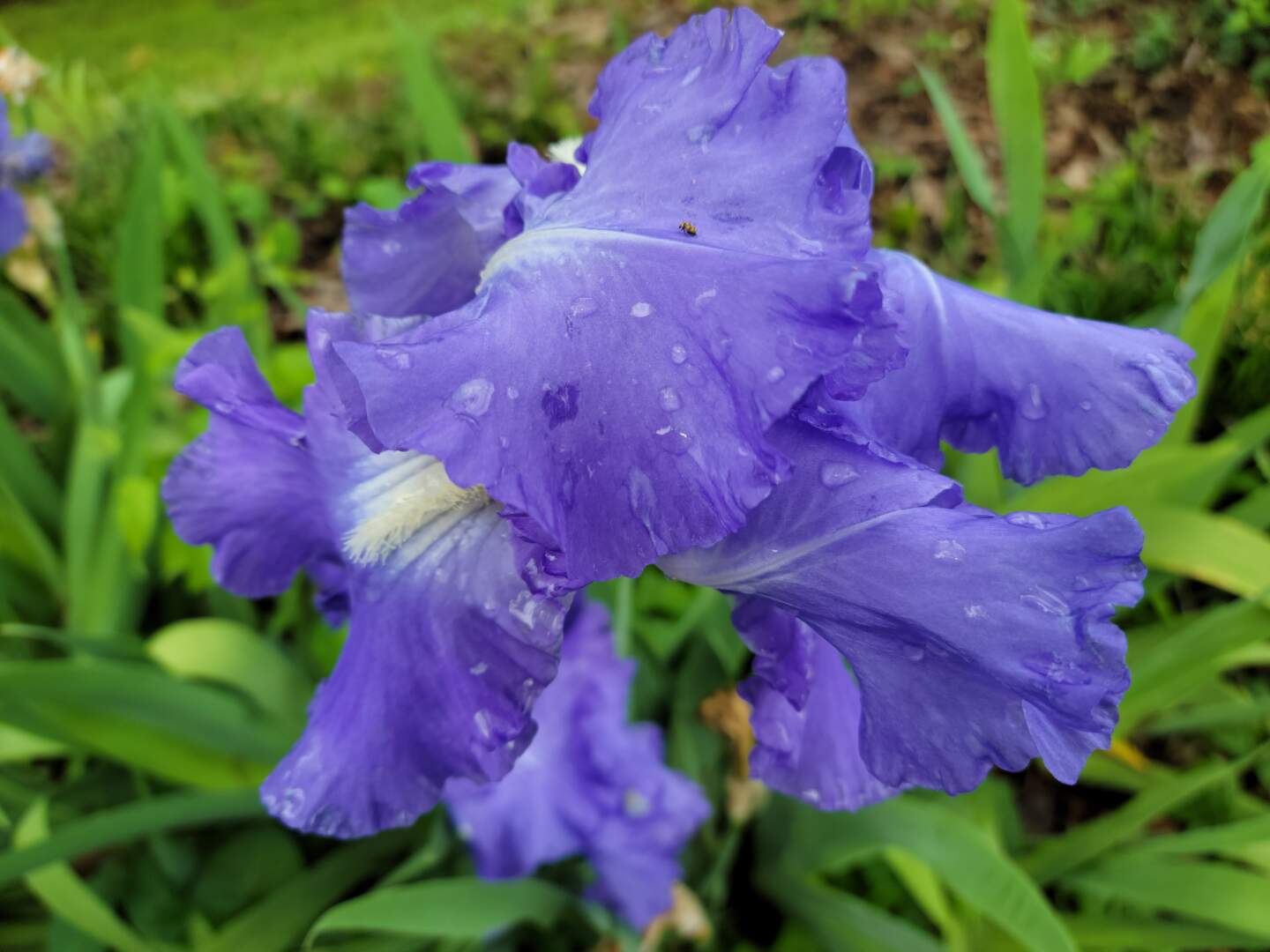
Although I am not an iris expert, I have deemed our bearded iris to be of the old fashion variety in that the color is traditional and the flowers bloom on very tall stalks. Those tall, flower heavy stalks are a weakness of the plant. When battered by wind and rain, they tend to topple to the ground. We have had a lot of wind and rain recently, but I don’t mind, the stalks that fall to the ground make their way to my kitchen window where their fragrance delights.
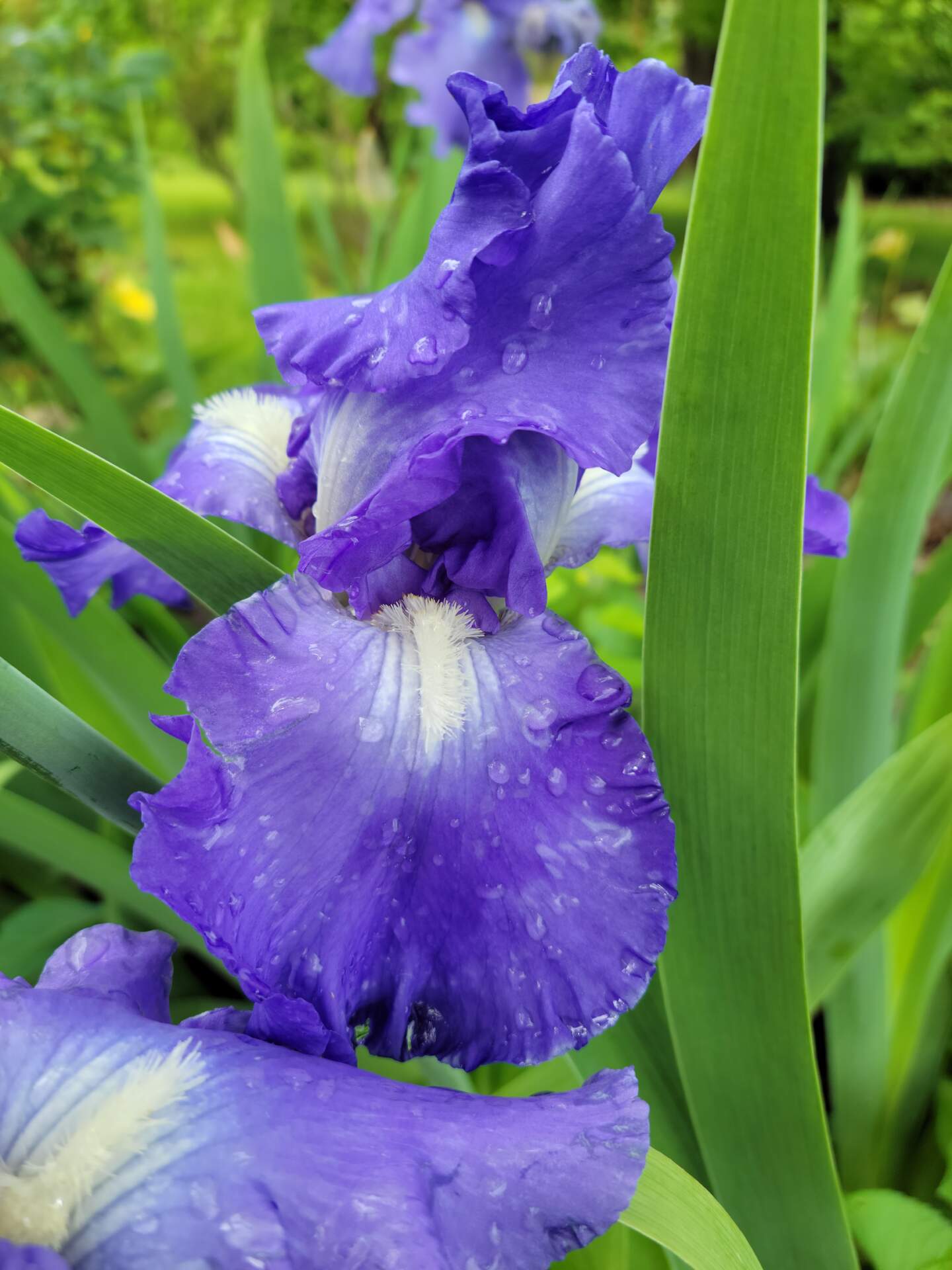
I believe the correct name for the beauty below is Rhododendron periclymenoides, or as I know it, Wild Azalea. The plant is native to the forests and woods in this area. This particular plant was purchased a number of years ago it from a small roadside nursery located a few miles outside the Great Smoky Mountains National Park. While the nursery had other plants (the variegated Solomon Seal pictured above was purchased at this nursery), their specialty was Flame and Wild Azaleas. I like to think the plant was cultivated in someone’s greenhouse, not removed from the forest. The nursery no longer exists, so I will never know the origin.
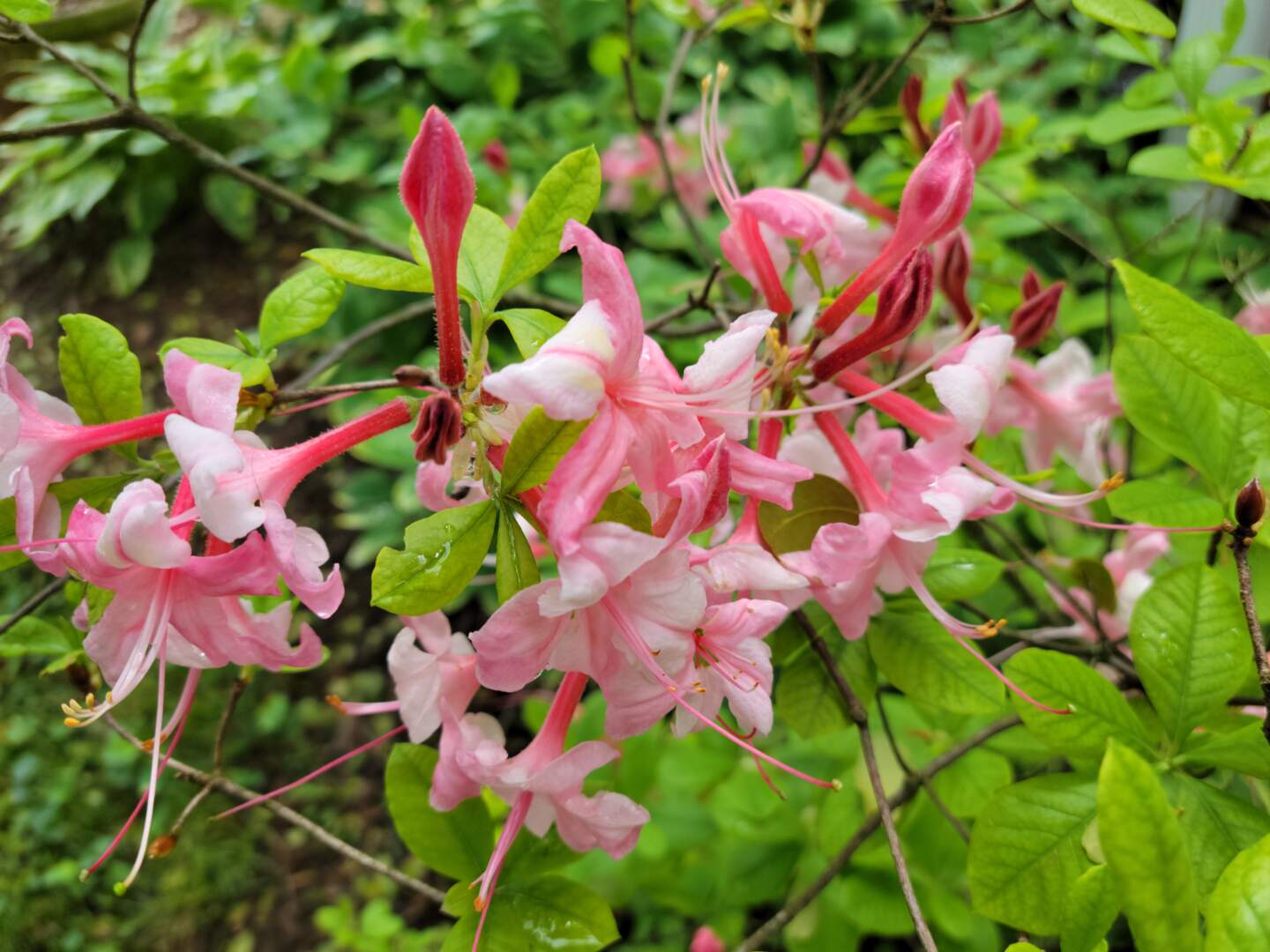
The Wild and Flame Azalea can be found in several lovely spring colors: pink, yellow, orange and some shades in between. One of the most beautiful Wild Azalea gardens in this area can be found on Biltmore Estate in Asheville, NC. Like most of the plants pictured above and below, the Wild Azalea was transplanted from my previous home, Hickoryoak, to our Hillsboro home.
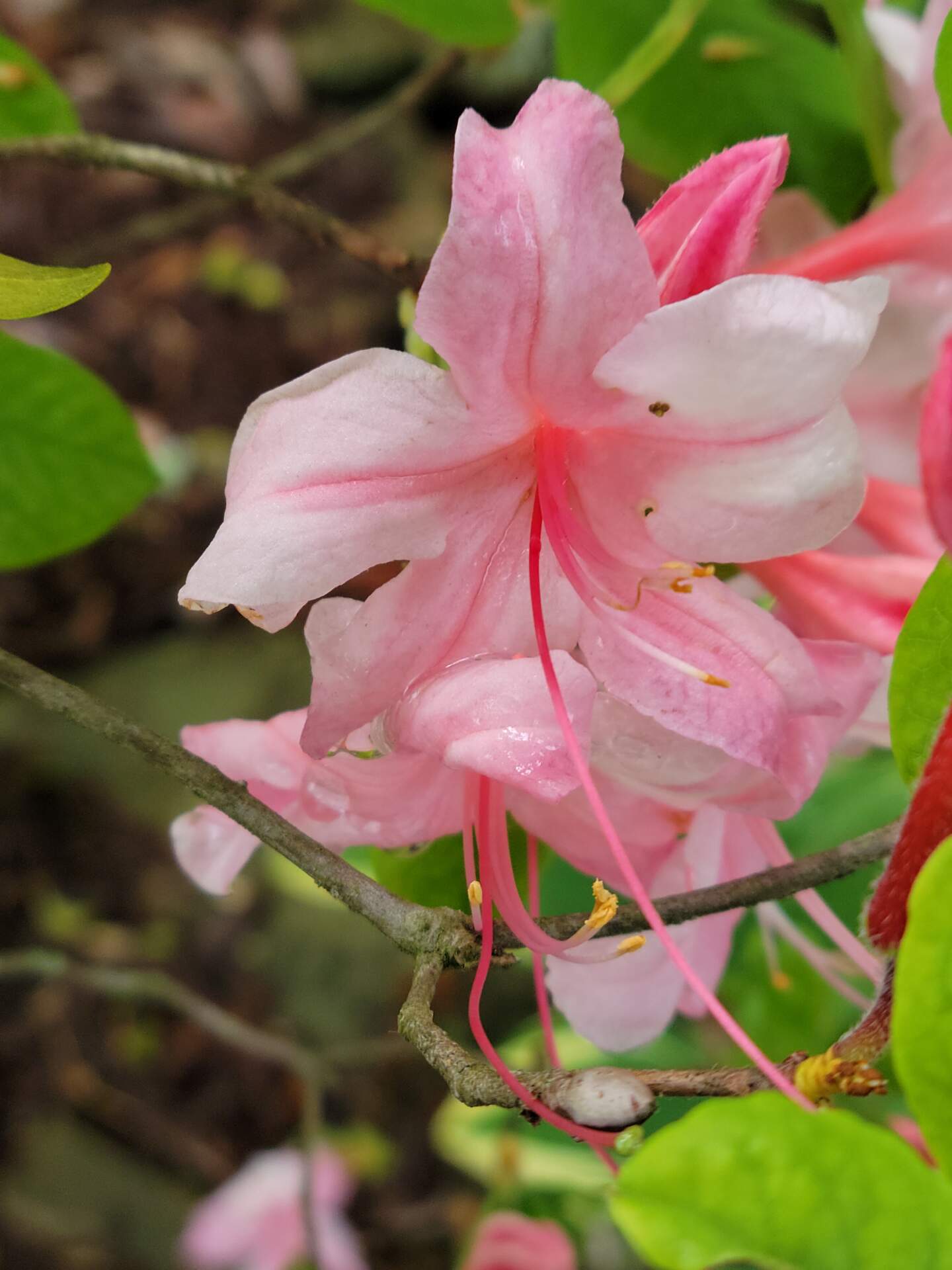
Particularly beautiful this year is our Lenten Rose Garden (Helleborus). This garden originated from plants I took from my mother’s garden before the family home was sold. I have noted in prior writings that my mother and I collected Lenten Roses for her garden. I considered it “our thing.” My younger sister would tell you the same, Lenton Rose collecting was something she and mother did, “their thing.” Honestly, my mother loved Lenten Roses. She would have had a “thing” with anyone that would help her collect these early spring beauties.
To me, Lenten Roses are one of the first markers that spring is on the way. The buds develop in late winter and reach a crescendo in late February-mid March, when white, pinkish and purple flowers blanket the ground. Is there anything more elegant in the spring?
I find it fitting that the peak of the Lenten Rose season coincides with the passing of my mother in March 2011. The garden, in its splendor, is a sweet, aching reminder of her. The blooms are fading now, replaced with a burst of new leaves. In a few months, the greenery will wilt under the heat and the plants will just exist until late winter when the process begins again.
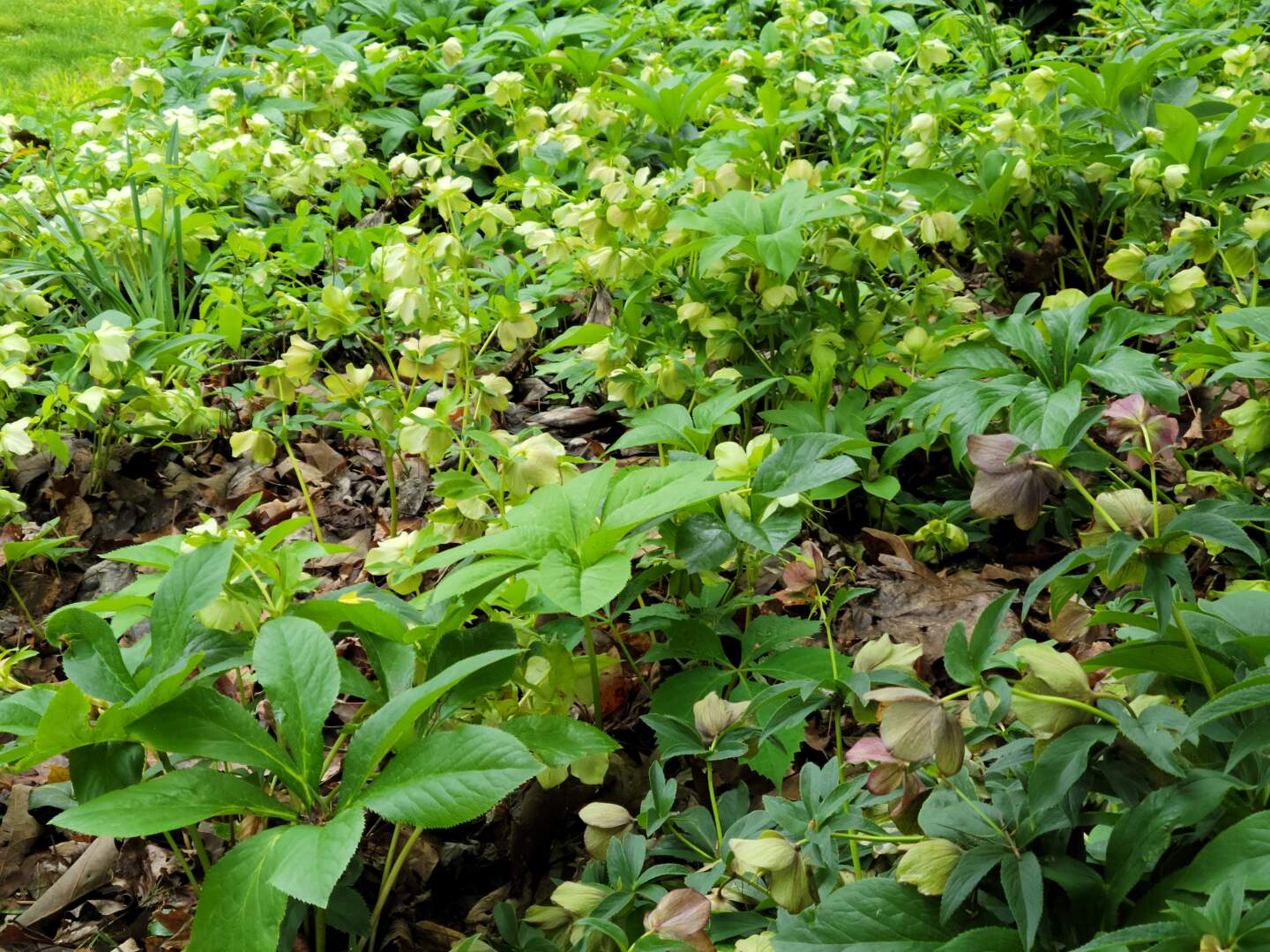
I don’t have a name for the flower pictured below. It is clearly a rose, an old style rose that we have, in various years, trimmed, cut to the ground, dug up and tossed next to the iris where it took hold. But the original plant, it keeps coming back.
This rose was in the garden when John purchased the house some 38-39 years ago. He has no fondness for this bush that produces long, thick, thorny stems. I swear the big thorns could cause a flat tire and the stems will reach out and jab you if you walk too close! But long stalks produce a plethora of red blooms in April and May, very pretty in spring. By June, the leaves turn brown and drop. At that point we are left with leafless, evil, thorny stalks. During my first few years in our Hillsboro home, I tried all the rose tricks I could find, nothing seemed to keep the leaves on the stalks. I get it, not a place I like to be either. These days, I let it bloom, cut it back and if it blooms again, so be it.
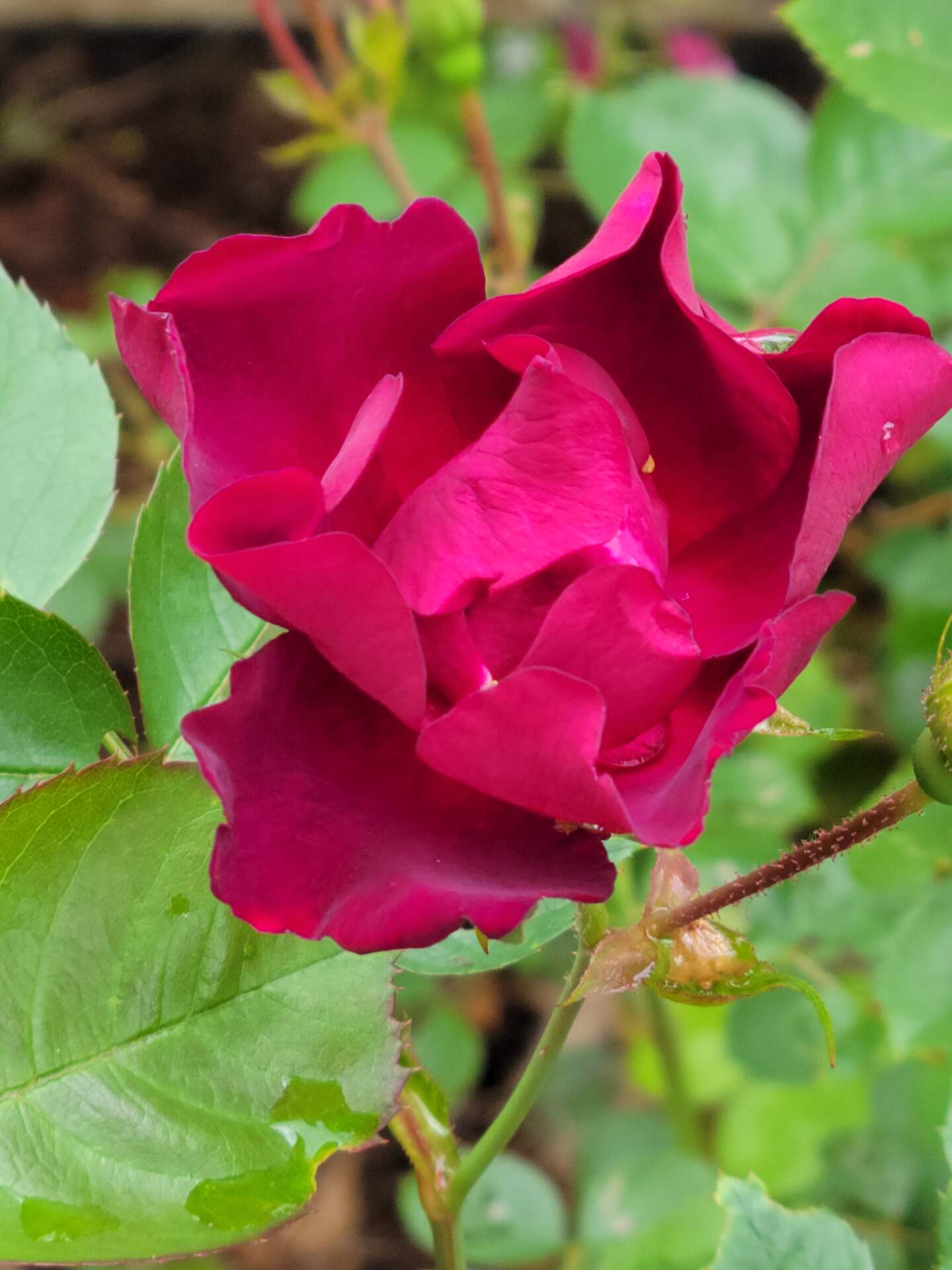
And so goes spring in the garden!